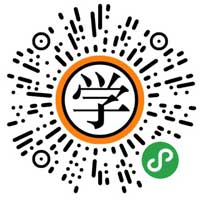- ��ҳ|
- ����|
- ����|
- ����|
- ͳ��|
- ����|
- ���|
- �˹�����|
- ��ѧ|
- ����|
- ����|
- ��ѧ|
- רҵ|
- Ͷ��|
- ����|
- �ڿ�|
- ������|
- ��ҵ����|
- ��ҵ����|
- �г�Ӫ��|
- ������Դ|
- ����ó��|
CAN����������ֽ��ҵ�е�Ӧ��_���Ʊ�ҵ���ķ���
����ʱ�䣺2015-03-20
��Դ���˴���̳
���Ʊ�ҵ���ķ���
ժ Ҫ
�ֳ���������70������������������ڼ���ϵͳ���ߣ���ϵͳ��װ��ά������������ϵͳ���гɱ�����ǿϵͳ�ȶ��Եȷ������Խ�ԣ��������ǵĹ㷺ע�⣬�õ���Χ��Ӧ�ã��������Զ����������һ��������
�ֳ����߿���ϵͳ��FCS�����з�ɢ�������绯�����ܻ����ص㣬��Խ��Խ��Ĺ�ҵ���������еõ��˹㷺��Ӧ�á�
��������ֳ�����CANΪ�������о�������ֽ������ֽ��Ũ�Ȳ���е�Ӧ��ԭ����ʵ�ַ�����Ŀ���ǸĽ���ҵ�ֳ��в�ص����ܡ���ϵͳ�������ֻ�������ͨ��ģ�ͣ������������ͨ�ŵĿɿ��Ժ�ʵʱ�ԡ�CAN���߲��ϵͳ���ֳ�����������λ��������ؼ��������λ������CAN���������ֹ��ɣ���λ������Ҫ�����Ƕ���λ���IJ�����������;ͨ������ʵʱ��ȡ��λ���IJ������������ݵļ�¼;������ݵ�ʵʱ��ʾ���쳣��������������ȹ��ܡ���������������������λ����ϵ������������ݴ��������λ����ɸ��Զ���IJ������ͼ�أ�������λ�����ͱ�Ҫ�����ݡ�
������ȶ�CAN���ߵ������ص㣬Э��ģ�͵Ƚ����˷��������봫ͳ��DCS����ϵͳ�����˱Ƚϣ������˻����ֳ����ߵIJ��ϵͳ����ֽ����������Ӧ�õ���Ҫ���壬Ȼ���������ֳ����ϵͳ��������Ʒ��������ص㣬��ϸ������ϵͳ����Ҫ��ɲ��ֵ�Ӳ���ṹ�Լ�Ӳ��������йؿ����ŵ����⣬������ϵͳ�������ֵij����ͼ��
������Ʋ���AT89C51��Ƭ����SJA1000�����������������CAN�����еĽڵ�Ӳ���ͻ����������漰���˹ؼ����������Ӽ���·���źŴ��������⣬������ֽ��Ũ�ȵļ�����Ϊ��������ֽҵ��������ҵ������Ҫ���塣
�ؼ��ʣ�ֽ��Ũ�ȿ��� CAN�ֳ����� AT89C51 SJA1000
Abstract
From the 70s��to now, because of the advantages in reducing the bus line, simplifying the system setting, maintenance, and management, reducing the operating expense, and the improvement in stability, the field bus is widely concerned. The widely application of it leads a revolution in automation.
Field Bus control system (FCS) has the advantages of decentralized, networked, intelligent features. More and more field of industrial control has been widely used it.
This thesis is based on CAN Field Bus, studying the concentration principle and method of it in the paper pulp process measurement and control . Improving the performance of industrial measurement and control scene. The system is made of network communication model, can improve the reliability of data communication and real-time. CAN bus control system is made of three parts ,the site controller (the slave), monitoring computer (PC) and the CAN bus. The PC's main function is to lower machine parameters set, accessing and recording the data of the lower machine parameters by field bus, monitoring the real-time data, outporting the alarm and exception report output and so on. The bus adapter links the Bus and the PC completing the data��s transferring. Lower computer completes the monitoring and control parameters of an object, and send up bit machine necessary data.
Firstly the performance characteristics of the CAN Field Bus, protocol models are analyzed, It was compared to the traditional DCS control systems based on field bus introduced in the paper production process control system the importance of the application; then discussed the on-site monitoring and control system design and performance characteristics, detail describing the major components of the system hardware architecture and hardware design issues related to interference, and described pieces of part of the program diagram.
The design uses the AT89C51 microcontroller and SJA1000 controller.Specific design of the CAN bus node hardware and basic software. The key components involved in the connection and issues such as signal processing circuit. Detection of which regulation as an example of pulp concentration. It is import to the paper industry and other industries.
Key words: pulp concentration control CAN field bus AT89C51 SJA1000
Ŀ¼
����ժҪI
Abstract��
Ŀ¼��
��1�� ����1
1.1 ��ֽ��ҵ��չ��״1
1.2 �ֳ������1
1.2.1 ���ֵ����ֳ�������2
1.2.2 CAN�����ص�3
1.2.3 �����ֳ�������Ӧ����״4
1.3 ��������Ƶı���������5
1.3.1 ��ֽ��ҵ�Զ������Ƽ��5
1.3.2 ���������Ҫ������ݼ�����6
1.4 ������6
��2�� ϵͳӦ��CAN�����������巽��8
2.1 ���Ʒ�����ȷ��8
2.1.1 �ֳ����ߵ��������˽ṹ8
2.1.2 ������Ƶ�CAN���߿���ϵͳ�����繹��ԭ��ͼ8
2.2 ϵͳ���ģ�鼰����9
2.3 ��ϵͳ����CAN���ߵ�ԭ��11
2.4 ������12
��3�� ����CAN���߲��ϵͳ��Ӳ�����13
3.1 CAN���ܲ�ؽڵ��Ӳ�����13
3.1.1 �����Ƶ�Ԫ14
3.1.2 ���ݲɼ�15
3.1.3 ����ִ�л���19
3.1.4 Ӳ�������Ŵ�ʩ20
3.2 CAN����ͨ�����俨���22
3.2.1 CAN���俨����22
3.2.2 Ӳ���ṹ����ԭ��22
3.3 ������25
��4�� CAN���ܽڵ���������27
4.1 CAN���ܲ�ؽڵ������ģ��27
4.2 CAN���ܲ�ؽڵ������ʵ��27
4.2.1 CAN����ͨ������27
4.2.2 CANӦ�ò�Э��29
4.2.3 �����ֵ�30
4.2.4 ����Ӧ��30
4.2.5 ���ܽڵ�ij�ʼ������30
4.2.6 ��س���31
4.2.7 �жϷ������32
4.3 ϵͳ��������33
4.4 ������33
��5�� ������չ��35
5.1 ����35
5.2 ����չ��35
�� л36
�����37
�� ¼һ AT89C51���ܽṹͼ38
�� ¼�� ��λ����ͼ39
�� ¼�� CAN������PC������ͼ40
����֮�ҡ�ѧ���ᡱС����
- ɨ����롰����ѧϰ�ʼ�Ⱥ��

�Ƽ��Ķ�
���ѧ˶ʿ������ר˶�������Ѷ�����[��ǰ������]
��Ҫ˵���۾���ѧ���۾���ѧ����������ϵ
����ѧ�İ˴��ҵ����+����ѧ��ҵ����
ʷ����ȫ���й�������ѯ��˾������318�ң�
ͳ��ѧ����ԺУ����
����֮�Ҿ��������Ƽ�
- �������ӣ�
- ���ݷ�����ѵ|
- ���ݷ���ʦ|
- ����ѧ|
- ����ѧ|


